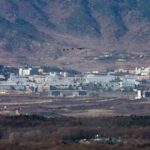① China Bans Importation of Japanese Seafood

Following Japan’s decision to discharge contaminated water from the Fukushima No. 1 nuclear power plant, China has banned the importation of Japanese seafood. China has been importing seafood from 10 regions in Japan, including Fukushima Prefecture. On August 24, the Chinese customs authority announced, “Starting today, we will fully stop importing seafood originating from Japan to prevent the risk of radioactive contamination that the discharge of Fukushima’s nuclear-contaminated water could bring to food safety, to protect the health of Chinese consumers, and to ensure the safety of imported food.”
China’s ban on seafood imports has dealt a severe blow to Japan. China was the largest export market for Japanese seafood. According to Japan’s Ministry of Agriculture, Forestry and Fisheries, last year’s exports to China amounted to approximately $670 million. On the 16th of last month, following China, the Russian government also announced that it would ban the import of Japanese seafood.
② U.S. Begins Importing Japanese Scallops

In this situation, the United States has announced that it will purchase large quantities of Japanese seafood, starting with scallops. The U.S. has informed of its plan to supply Japanese seafood to the U.S. military in Japan. On the 30th of last month, U.S. Ambassador to Japan Rahm Emanuel said, “We plan to sign a long-term contract between the U.S. military and the Japan Fisheries Cooperative Association, starting with scallops and considering the purchase of other seafood.”
Last year, the most exported seafood from Japan was scallops. China imported 100,000 tons of scallops the previous year. China imported scallops with shells and processed them locally for export to the U.S. and other countries. The U.S. has announced that it will first import 1 ton of scallops. This is the first time the U.S. military in Japan is purchasing Japanese seafood.
Ambassador Emanuel explained, “Until now, the U.S. military has never purchased local seafood in Japan. This attempt is to help offset the damage caused by China’s ban on Japanese seafood imports, which China has called part of an ‘economic war.'”

Additionally, the U.S. government is reportedly reviewing the import status of seafood from Japan and China. Stores and restaurants on military bases will sell Japanese seafood, and the variety of seafood offered will gradually increase. In particular, Ambassador Emanuel mentioned that “it will be a long-term contract between the U.S. military and the Japanese fisheries industry and cooperative association.”
As the U.S., which is currently not on good terms with China, expresses its intention to purchase seafood that China has refused, it seems to solidify its alliance with Japan further. However, this decision has sparked significant backlash within the U.S. There is anger over the fact that Japanese seafood, which has been discharged from the nuclear power plant, is being provided to soldiers.
③ Free Distribution of Japanese Scallops in School Meals

Japanese scallops have been exported to China, processed using cheap Chinese labor, and then re-exported to the U.S. and Europe. With China’s ban on importing Japanese seafood blocking the export route, Japan has announced plans to have prison inmates process the seafood. They even considered dispatching inmates to processing plants as they could not meet HACCP (Hazard Analysis Critical Control Point) standards in prisons. However, they abandoned this plan after realizing that some countries restrict importing products produced through prisoner labor.
In Japan, there is an encouragement for citizens to eat more seafood. They are running a ‘seafood consumption campaign.’ However, seafood sales are sluggish. With China’s ban on importing Japanese seafood blocking the export route, Japanese scallops are being provided for free in school meals.

Morimachi, a local government in Hokkaido, China, was the primary export destination for most scallops that were locally produced and processed. One scallop processing company said, “With the export route to China blocked, products amounting to 100 tons of scallops have returned to the warehouse.” They added, “20% of the company’s sales were from exports to China, and we are considering opening up new markets in other countries such as the U.S. and Europe.”
Ultimately, they decided to provide the scallops that couldn’t be exported. They were piling up in the freezer for national school meals. From November to February next year, they plan to provide approximately 500,000 servings of scallops to 120 local governments nationwide. In a cold storage warehouse in Hokkaido, scallops are piled up to 8 meters (26 feet) high, and there is no more space to store them. Removing scallop shells requires labor costs, which further increases losses. With nowhere to keep them, they have planned to provide them with free in-school meals.
By. Han Mia















Most Commented